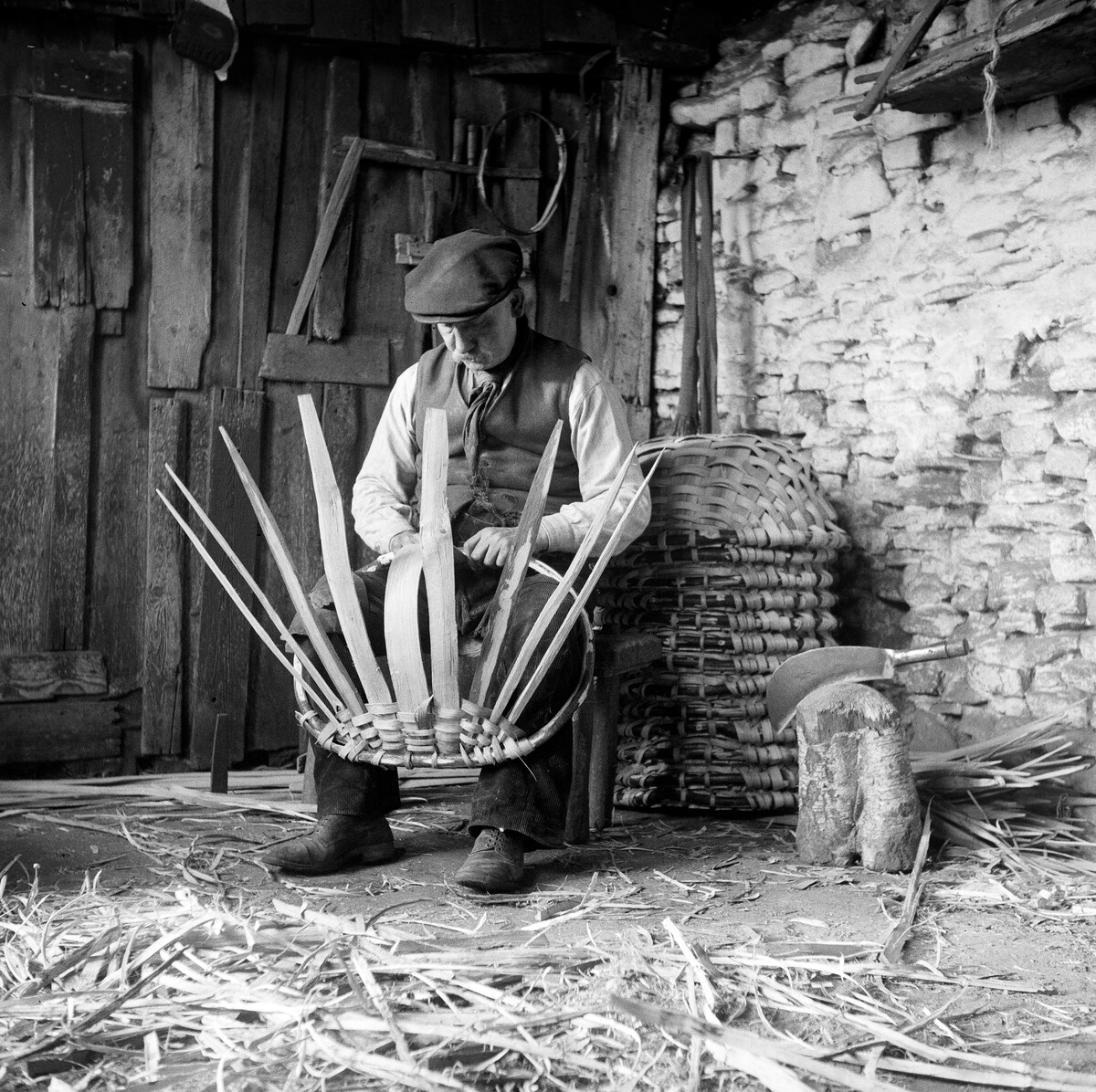The English countryside plays host to a myriad of flora and fauna. The temperate climate and varied soils help to support over 70,000 known species of plants, fungi, animals and microorganisms. They live in diverse areas such as fenland, ponds, lakes, streams, fields, forests, woodland and hedgerows. Plants and animals do not merely live alongside us, they also constitute a great part of our daily lives.
Our crafts are indicative of the enduring relationship we have with the natural world
The Museum of English Rural Life and the University of Reading Special Collections, discover how historically and presently we used and continue to use flora and fauna in traditional crafts. It is just one way of showing the responsibility we hold for the preservation of our natural world.
Throughout history people have found many uses for these biotas, such as for food and medicine. But England also has a rich history of using plant and animal material in traditional crafts. The country’s artisans use different plant and animal material in the production of natural dyes, parchment and baskets.
Flora and fauna in dyes and dye-making
Flowers found in a typical English garden, or even wildflowers in the countryside, can be used to produce a wide range of natural dyes. Most flowers, such as asters, dahlias and pansies, typically yield yellows and oranges no matter the colour of their petals. The colour instead comes from the stamens. Some plants produce other hues, such as woad, although its flowers are yellow. It became the main indigo bearing dye plant in temperate climates since its introduction to Northern Europe over 2000 years ago. Even weeds, vegetables and lichen can be used for dyeing.

The natural fluctuation of colour
Different factors can affect the colour that an individual plant produces. Across the year different seasons influence the richness of a colour, for example. In spring, pale yellows are more common. But this develops into orange as the plant moves towards flowering in summer.
Some plants keep their dye colour after leaf fall, while others, such as walnuts, lose it very quickly. Any plants that do retain their colour typically produce richer and redder dyes at this point in the year. Even the position of the plant in relation to the sun can have an effect. Hawthorn leaves taken from the north side of a hedge may give a chestnut colour. On the other hand sprays from the south side of a hedge may yield gold or yellow.

In order to produce an effective dye, plants are boiled and combined with a catalyst which helps them to bond with fibres. This catalyst is called a mordant and can be either brightening (alum, chrome and tin) or dulling (copper and iron). Once made, these dyes can be used on a variety of textiles. Here at MERL, we will soon be trying our hand at creating our own dye garden with the help of our gardening volunteers.
Basketry
One of the oldest and most widespread uses of plants is in basket making. A range of plants have been used in basketry across the world because their unique properties and local availability make them suitable for creating specific types of basket.
Willow, for example, grows rapidly in England near running water and can be cut every winter once the plant reaches three years of age. It represents a strong but flexible material that can be used to make baskets for use in farming or in the home.
The colour can even be altered using natural methods. To achieve a darker colour, the willow is boiled then left to soak so that the tannin in the bark stains the wood inside. ‘White’ willow can be made by stacking bundles in shallow pits of water until leaves begin to appear in Spring. Having different coloured willow allows artisans to create far more decorative baskets.

Many other plants can be used to make a variety of different basket types. Spales, for example, are typically used for potato gathering and made from oakwood with a hazelwood rim. Common reed, found extensively in wetlands across the country, can also be harvested for basket making. This availability and the ease with which it can be worked makes it a particularly good choice of material for beginners in basketry.
… and writing history
Not only plants can be used in crafts, but animals native to England also. They are used for the making of writing materials, for example. For centuries the skin of young sheep (particularly Southdown, Dorset and Shropshire breeds) has been turned into parchment. Their soft and supple skin allows for a quality product. The skins are put through a labour-intensive process of ‘pickling’ or treating with lime. They are then stretched before being worked with hot water. A sharp knife ensures they are free of flesh and are of even thickness.

Once stretched and dried, the resulting product is a smooth, durable material of ‘pearly white appearance’. These qualities have made it an ideal material for important works such as legal documents, illuminated manuscripts and religious texts. The durability of parchment has meant that archives across the country now house thousands of historic examples. In the MERL’s farm record collections property deeds, such as the one shown below, can be found dating back to at least 1600.

Written by Emma Farmer, Reading Room Assistant
Edited by Jake Doyle, Blog Coordinator for Explore Your Archive, MLitt Archives and Records Management Student and Archive Assistant at Suffolk Archives
Further Information
- The Museum of English Rural Life
- The museum’s Social Links:



